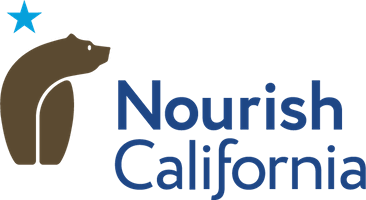10.10.2016 A big thank you to all of you who participated in CFPA’s annual policy development outreach! Your input plays a vital role in setting CFPA’s advocacy priorities.
We truly appreciate the time and thoughtfulness of those who completed informational interviews and surveys. We are grateful for the input from local hunger anti-hunger and food security coalitions that welcomed us at local meetings and events. We closed out our 2017 CFPA Policy Development Survey a few weeks ago, and are now zeroing in on policy priorities for the year to come.
![]()
The 2017 policy survey solicited input from the CFPA network on nutrition issues affecting California communities and promising policy solutions. The complete set of survey questions is available. PDF
We will consider the information gathered, along with a review of research, our strategic plan, and capacity as we develop our 2017 state policy priorities. In the coming months we will share our priorities in a 2017 legislative agenda, an administrative advocacy agenda, and a research agenda.
Looking Forward to 2017
We received detailed input from hundreds of key stakeholders throughout the state over the past few months. Administrators, advocates, community members, community leaders, benefit recipients, and researchers all contributed to the survey and stakeholder engagement.
Stakeholders believe that efforts aimed at increasing access to and participation in the federal nutrition programs (e.g., CalFresh, school meals) must continue. Respondents strongly support improvements to modernize program enrollment, improve program quality, ease the process of maintaining benefits, and alleviate administrative burdens for providers.
Key Issues and Survey Results
School Meals
- School breakfast program participation is persistently low among free and reduced-price eligible students – breakfast after the bell and universal free meals are viewed as most effective strategies to improve participation
- Programmatic fiscal constraints and challenges, including insufficient reimbursement rates, lack of commodity entitlement for school breakfast, facility and equipment needs, and minimum wage requirements impacting labor force.
- Desire for higher-quality school food (freshness, taste, appeal), including support to improve procurement practices
- Inequitable access to nutritious school meals for students enrolled in charter schools
- Need for buy-in from school stakeholders outside of nutrition services, whose leadership directly & indirectly affects the quality/reach of school meal programs
- Lack of clarity on the role school meals can play in supporting equity-focused education reforms, including the Local Control Funding Formula (LCFF) implementation and the federal Every Student Succeeds Act (ESSA)
- Insufficient time to eat school lunch
- Lack of nutrition education in many schools
CalFresh
- Leveraging the successes of ACA implementation and increased Medi-Cal enrollment present the greatest opportunity to boost California’s CalFresh participation rates
- Low CalFresh participation rate among seniors – advocacy should prioritize solutions that increase enrollment and increase the value of benefits for seniors. Efforts should consider the unique circumstances posed by the SSI “cash-out” policy
- Low-income college student hunger and student barriers to accessing CalFresh require innovative solutions
- Advocates should seek out solutions to modernize CalFresh and optimize the benefits of the programs by pursuing innovative federal pilot programs
- Need to prioritize available solutions to increase dual enrollment between CalFresh, Medi-Cal and WIC
School Meal Enrollment
- Multiple opportunities presented by implementation of statewide Medicaid Direct Certification for school meals
- Advocacy to ensure that any federal changes to enrollment verification through Child Nutrition Reauthorization do not negatively impact participation in the programs
- Low uptake of Community Eligibility Provision in California schools, even among those who are eligible
- Low direct certification match rate
- Federal poverty levels used for program eligibility do not reflect the real need in California, given the higher cost of living and higher true poverty rates (as seen in the Supplemental Poverty Measure)
- Application barriers, including language, error, getting lost, internet access for online applications
Out-of-School Nutrition
- Current congregate feeding model in summer meals presents many challenges (funding, transportation, limited days/times of service)
- Great desire to expand federal Summer EBT to California
- Broad context of summer programming challenges- potential to support more summer programming and summer meals through LCFF
- Afterschool supper meals are only available through CACFP to students enrolled in enrichment programmings, limiting reach
- Numerous barriers to the uptake of CACFP afterschool suppers
- Nutrition regulations on competitive foods do not extend through afterschool hours
Early Childhood
- Drop-off of WIC participation after infancy, declining participation in general
- CACFP meal pattern changes will require changes in policy and practice, along with implementation challenges
- Lack of nutrition standards in family child care homes that do not participate in CACFP
- Compounding effect of broader child care challenges: access, affordability, workforce development, parental engagement
Drinking Water
- California’s persistent drought and water quality crises continue to disproportionately impact high-poverty areas of the Central Valley, Central Coast and Sierra Foothills
- There is a lack of readily available data on the quality of drinking water in schools
- Federal nutrition programs, including child care meals and WIC, present opportunities to increase access to safe drinking water for young children and families
- Public and community spaces can be better utilized to provide access to clean drinking water and promote water consumption
Food Insecurity Screenings & Referrals
- Electronic Health Records should incorporate food insecurity into foundational screens – no statewide data on food insecurity in the Medi-Cal/Medicare population
- Low uptake of food insecurity screening in health care
- Promising data on proactive referrals to nutrition assistance, but lack of direction for health providers on how to effectively refer, including variations in 211 services across the state
What’s Next?
Thanks again to everyone who took the time to complete the survey or participate in interviews. Your feedback has already proven useful as we begin to narrow down our 2017 policy priorities. In the coming months we will share those priorities in our annual policy agendas.
For updates, please subscribe to our Nutrition Action Alert. link



